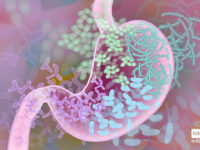In 2012, model Lauren Wasser lost one of her legs after contracting Toxic Shock Syndrome (TSS) when she was 24. In January 2018, the model amputated her other leg because of lingering complications. Back in November, Wasser wrote an op-ed for Instyle.com revealing that the loss of her left leg was inescapable — all because she used tampons. TSS is a bacterial infection caused by the staph bacteria, Staphylococcus aureus, according to the National Institutes of Health (NIH). The rare disease was also responsible for the death of a 16-year-old Canadian girl on an overnight school trip last year, in which a tampon was at least partially to blame. TSS is characterized by high fever, low blood pressure and failure or abnormalities in multiple organ systems. This condition occurs most often in women ages 15 to 25, according to Clinical Infectious Disease.
Wasser is now educating girls and women on the dangers of tampons: that they can lead to TSS. The main issue here is, when a tampon becomes saturated with blood — even a small amount — and is left in the vagina for longer than eight hours, it becomes a breeding ground for the growth of bacteria associated with TSS. The infection is prone to effect only menstruating women, Dr. Sherry Ross, an ob-gyn and women’s health expert at Providence Saint John’s Health Center in California, told Women’s Health in July. She also said, “In women, TSS is mostly associated with using super-absorbent tampons,” although skin lesions and burns could also give the bacteria a chance to grow and spread this disease.
A recent study conducted by Dr. Gerard Lina, a professor of microbiology at the University Claude Bernard in France, found fibers that are involved in the making of tampons, whether 100 percent organic or synthetic, are all linked to TSS. Dr. Lina’s group tracked the growth of Staphylococcus aureus, as well as the production of the toxin responsible for TSS, in 15 currently marketed tampons under laboratory conditions. Dr. Lina and his team found no differences in microbial growth or toxin production, regardless of the fiber the tampon was composed, according to the study published in Applied and Environmental Microbiology in April. This showed that the material of the tampon does not seem to matter; cotton and synthetic can both cause the disease. Instead of the material, the space between the fibers proved to be an interesting component of the study. The space contributes to the intake of air in the vagina and structural difference in the fiber bed presented a major site of S.aureus growth and toxin production. They performed the same investigations using menstrual cups and their results did not prove that menstrual cups are safer than tampons. This means that similar precautions need to be taken for women who use tampons and menstrual cups.
The main issue here is, when a tampon becomes saturated with blood — even a small amount — and is left in the vagina for longer than eight hours, it becomes a breeding ground for the growth of bacteria associated with TSS.
The use of menstrual cups and organic tampons has risen lately because people assume that they are safe to use. While some people are aware of TSS, many are in the dark with the risks associated with both menstrual cups and tampons. Frequent changes of menstrual cups and tampons should be emphasized for users. If a menstrual cup is to be used, it should be boiled between menstrual cycles to kill any sort of bacteria. It is highly recommended that super absorbent tampons are not used and that the user should not keep them in for more than four hours. Moreover, an alternate could be the use of pads. Using pads at night is more hygienic and healthy. Dr. Jill Rabin, a director of Women’s Health at Northwell Health in New Hyde Park, N.Y., and other gynecologists have recommended to switch to pads during a heavier flow. The majority of the cases worldwide have risen due to the extended use of tampons.
Researchers from the Medical University of Vienna’s Department of Clinical Pharmacology, in collaboration with the Biomedical Research Society in Vienna, have now developed the world’s first safe and effective vaccine against this disease and successfully tested it in a Phase I trial. They are currently working towards phase II. Until a vaccine is available, it is important women are aware of the risks that are associated with the use of tampons. While advertisements for Advil always put emphasis on the small side effects like headaches or nausea, tampon advertisements often just show girls running happily on the beach. Many tampon makers give a suggested ingredient list saying their product “may” contain cotton or rayon or polyester, or possibly a combination of them. It is crucial to get rid of these ambiguities in order for women to have healthy hygiene. As Lauren Wasser’s story and scientific studies show, the prevalent nature of the use of tampons and menstrual cups and their associated risks need to be taken into serious consideration.
Image source: Pixabay






